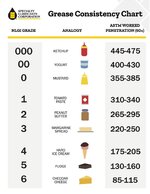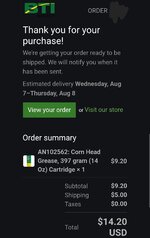Good morning. These are some really good questions and I will answer to the best of my experience since owning (rec'd 5/23) my m620 equipped bike.
- Quantum of power output and smoothness of torque sensing
Coming from Bafang hub drives- There is an obvious difference power wise between the hubs and middrives. The amount of power that the UART m620 puts out is awesome and another reason I got it. Out of the box the one thing I noticed though is the throttle power was too much from a start. Luckily I knew this going into the bike thanks to research. Easy fix with a quick programming change.
Torque sensing on the m620 has been a surprise favorite of mine. I like the predictable power application that is applied or taken away when riding. There is no perceived delay of on or off, making the bike feel more natural and controllable.
2. Reliability in all weather conditions
I really do not plan rides if the weather is going to be bad so my experience is minimal.
I have been caught in a typical rogue Florida rain shower and was able to get under cover for the extra 5 minutes it rained. No issues after the rain
Some rides after storms and through some puddles off main trail, without an issue.
3. Support and parts supply
The only things bought that are related to the m620 itself has been an eggrider (through Luna) and a set of new smaller cranks via Alieexpress.
From the looks of it, there are a couple of well known parts suppliers that help fill the void of parts that maybe Bafang could do better in offering.
Beyond that, I am still comfortable in owning the m620 and know that I can get parts, maybe not as fast as I may think I need them.
4. Controller programmability either from OEM or at the end-user level
Having the UART m620 and being able to program it is the #1 reason I got what I did. I played around with the USB cable and Bafang program when I first got the bike. First thing I did was to program the throttle to be less dragster off the line and more manageable.
I did get the eggrider shortly after getting the bike. I would not change that decision. I like the smaller screen footprint on the handlebars plus the Bluetooth connection to my phone. I do rides with my cellphone mounted on the handlebars so having that display screen at the tip of my finger is fine as a main display.
Getting into the weeds and not trying to be an eggrider fanboi, but being able to reprogram at any point in a ride is great. No need to carry a laptop and cable. I have programmed something before a ride and found that it was not quite right, so all I had to do was pull off the trail, make a few changes and go. This scenario really is more of a ride and test situation and not so common once you get your settings dialed in on the bike.
5.Communication with BMS, display, charge
The Frey CC does not have a BMS according to Frey. So any of the models that uses the same battery as the CC Fat will not have a BMS.
I have had no issues when it comes to the motor talking to the display(s).
One thing that people looking into the higher power/ higher torque Bafang middrives should take into consideration is the wear and tear on the drive train if equipped with the chain and derailleur setup. This could go under Support and Parts supply, but being that this drive train setup is like a normal bike, parts from a local bike shop and support is possible.

